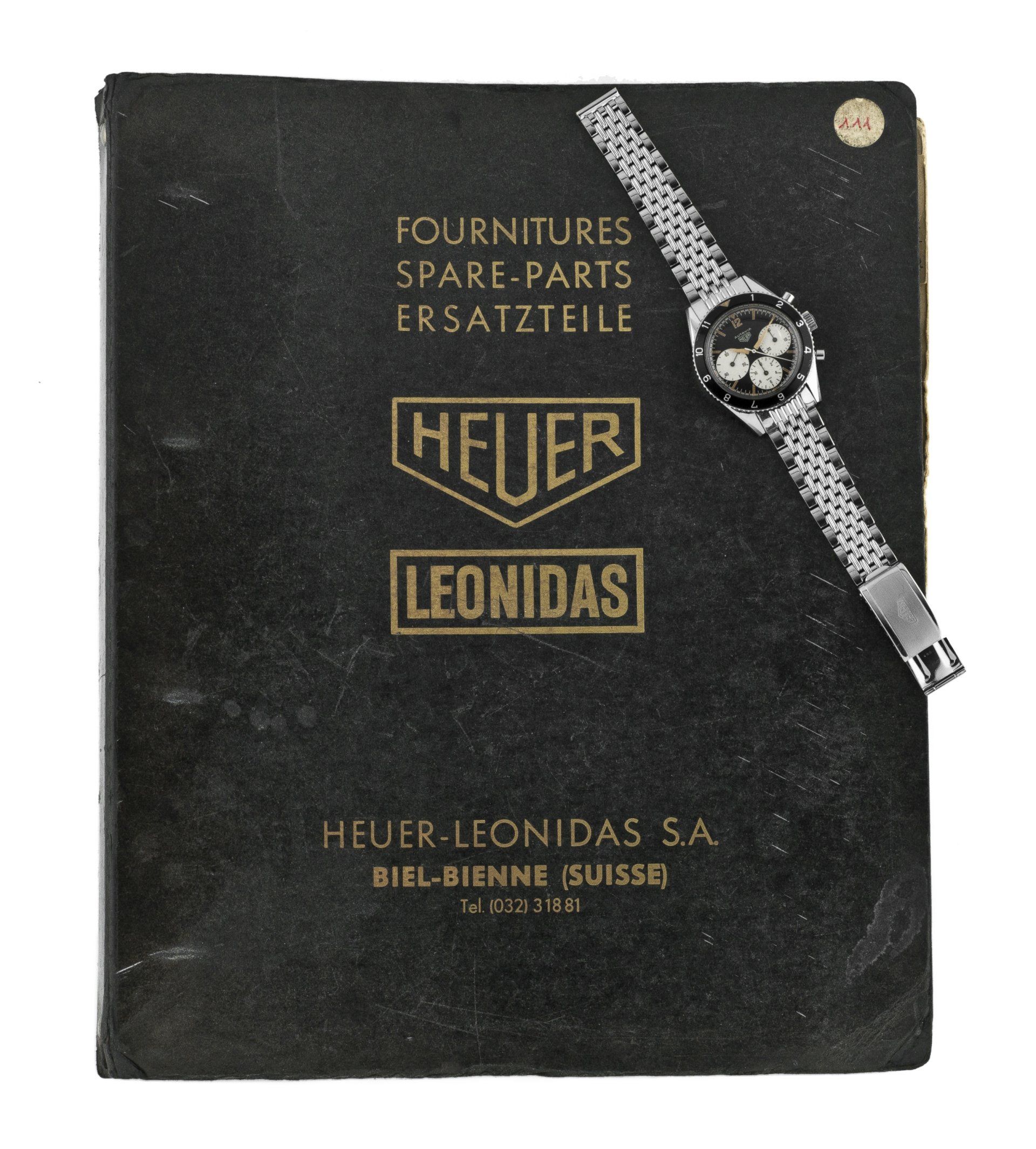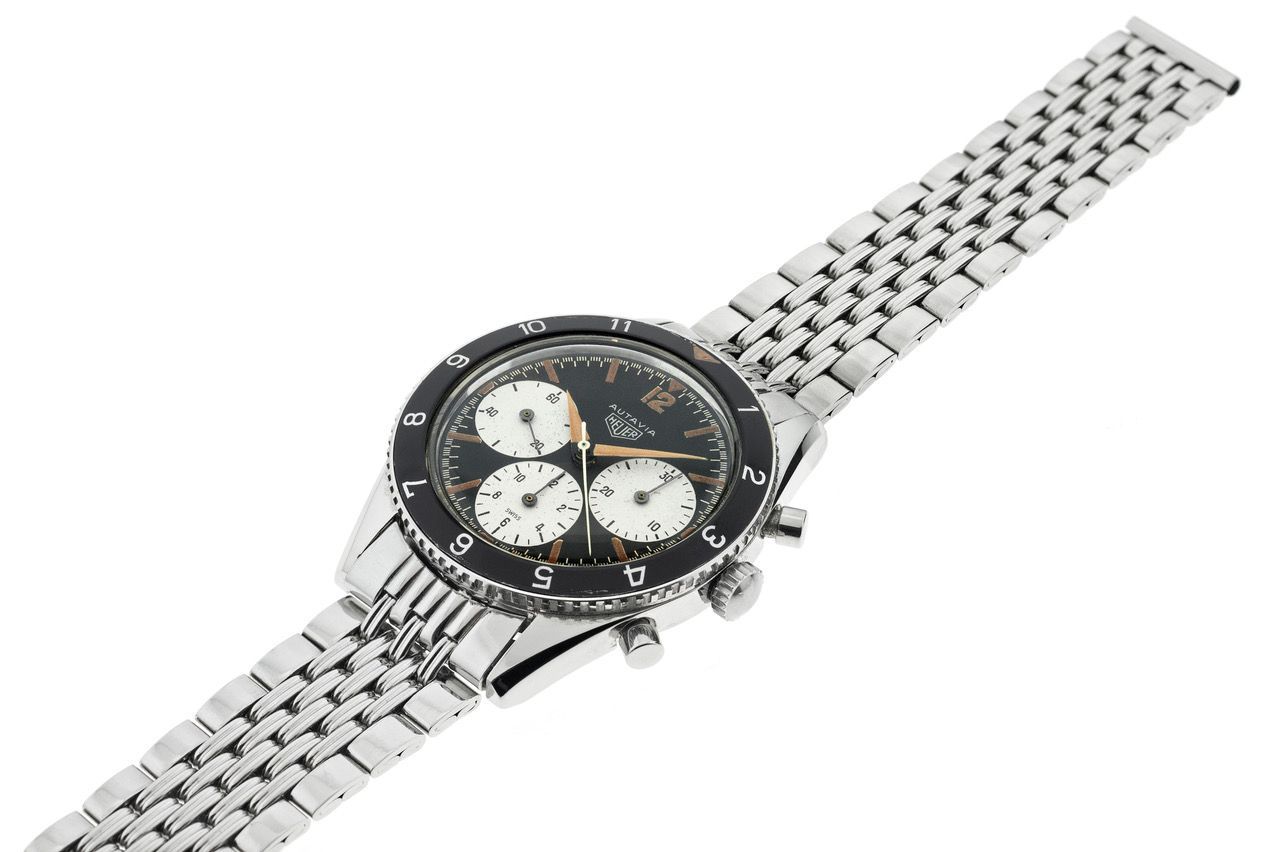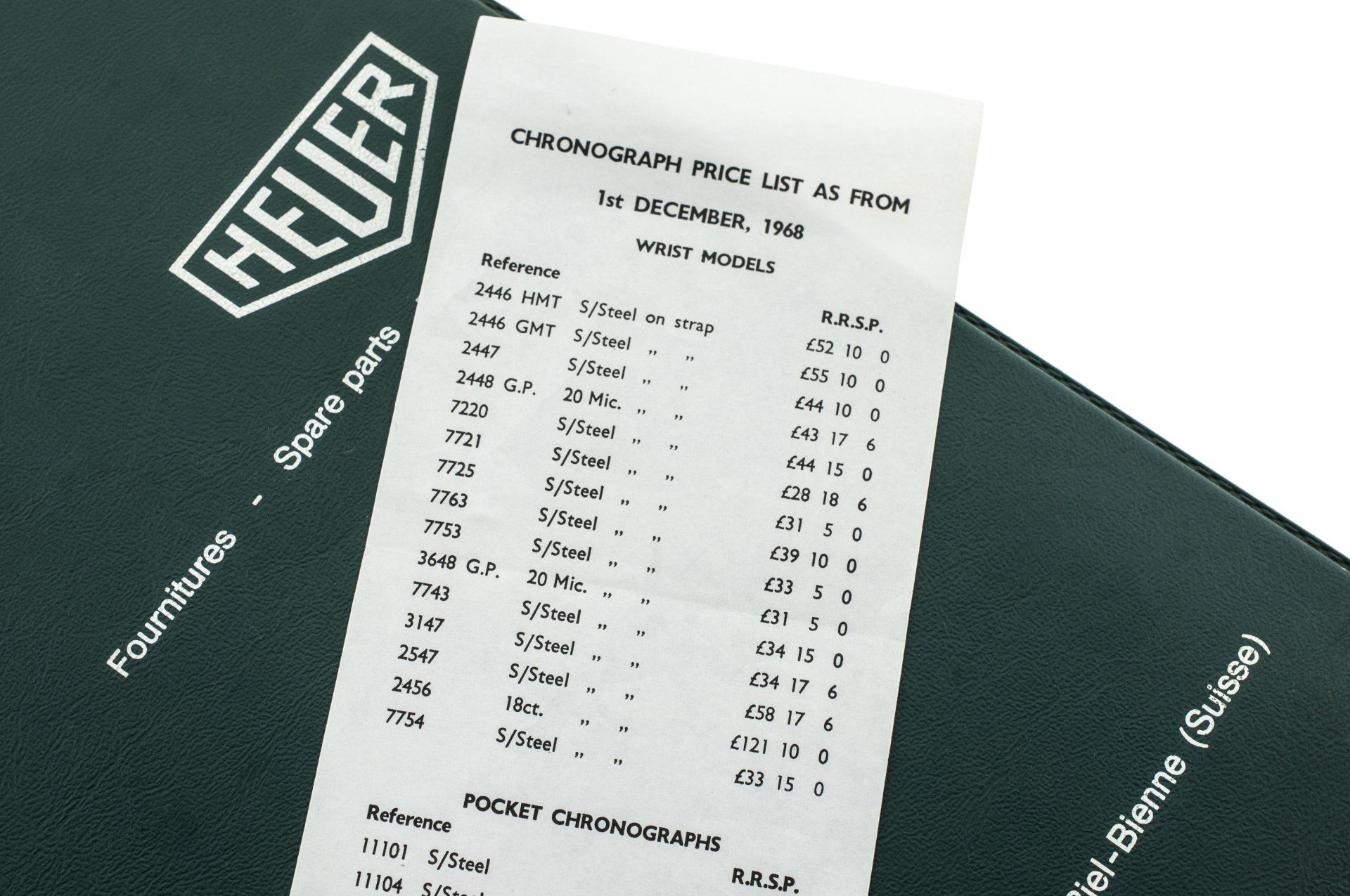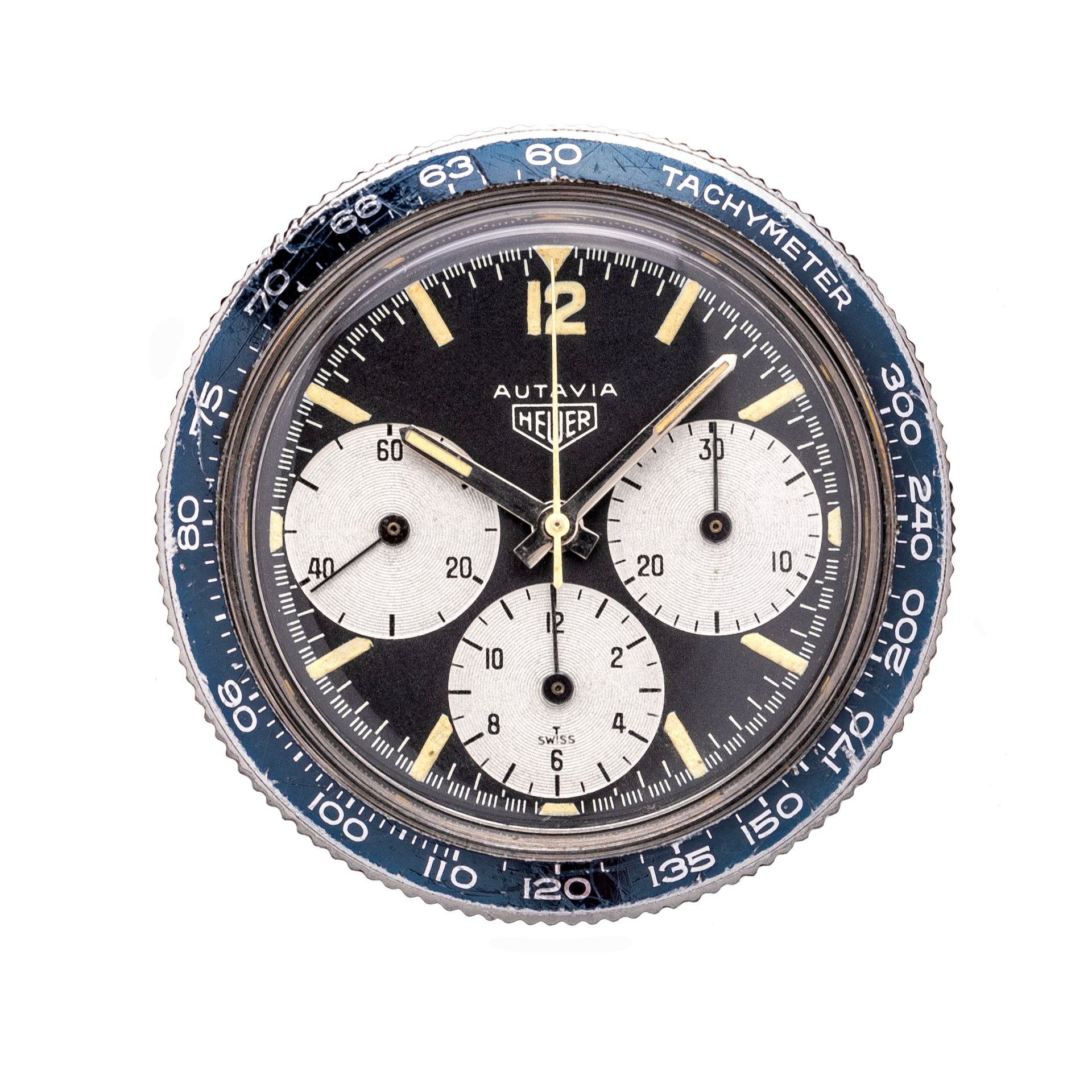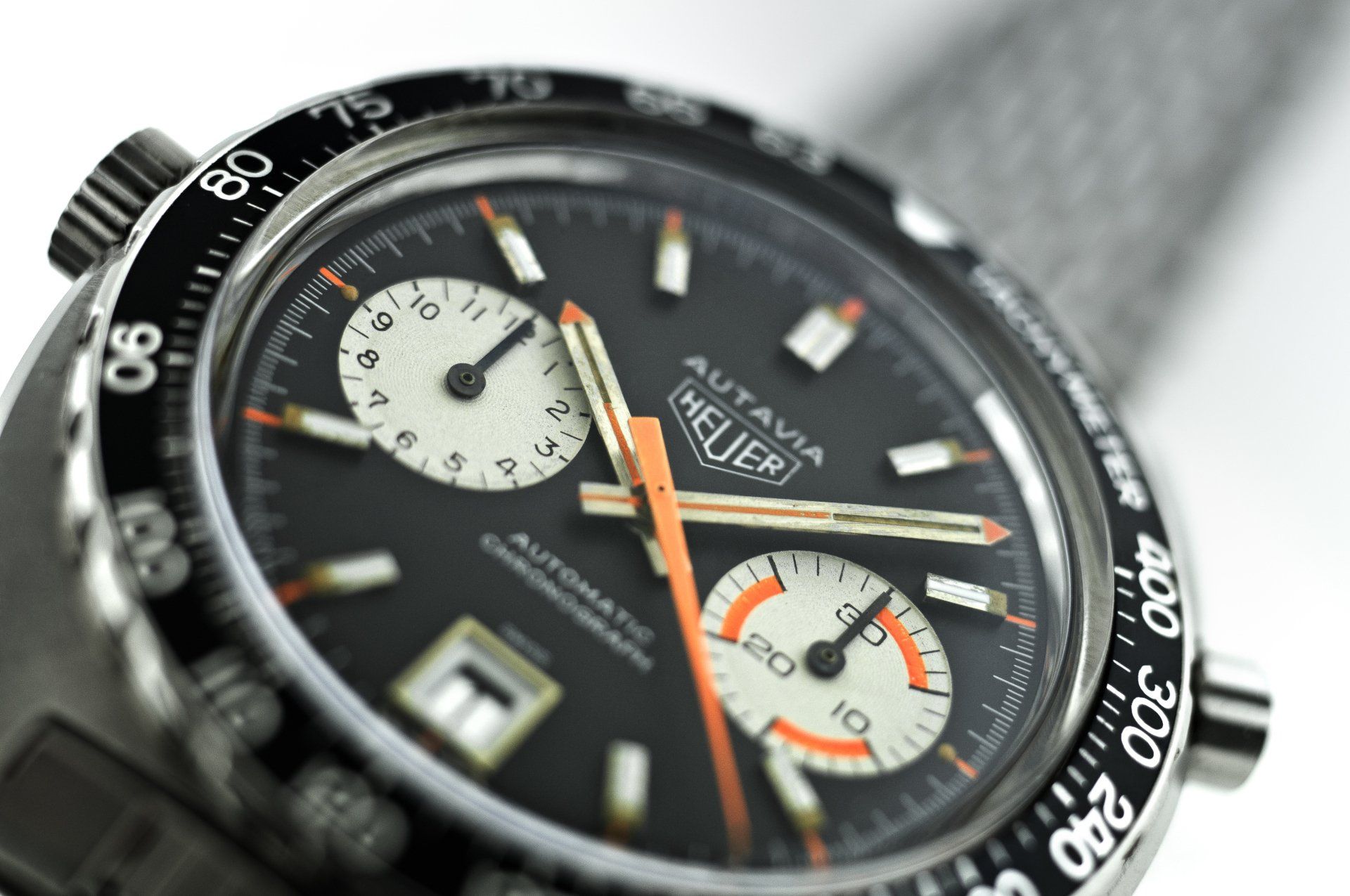November 2017
This is the first guide in some time where by far the majority of vintage Heuers have remained at the same value. There are some red values for "going down" and a few green values (mainly on a few rare and excellent condition pieces) which means "going up". The colour (up and down) information cannot be shown on mobile devices, so users should log on from their PC/Mac to better see this crucial data.
Generally we are seeing a breather (and in some cases a softening) on the majority of watches that are either not super rare, nor in the best original condition and it would not surprise me if we see a little more red in the next guide. It's true to say we are seeing the market fragment into "Tier A" and the rest. "Tier A" stands for the best of the best, both in condition, originality and collectibility grade. The market further down the chain has generally said it is not willing to pay much more than the current level for Heuer watches, real collectors have also become better educated as to watch "details" re serial number, bezel, correct parts etc, for me this is a healthy thing, it helps to separate the "wheat from the chaff" and such incorrect watches remain hard to sell in the current market.
You could also summarise the current market by saying that the focus has clearly shifted towards the 1960s and that the 1970s watches (especially Autavia) are now less in demand than they once were (this trend has strengthened in the last 6 months). It is generally believed that the 1960s were the heyday of vintage chronograph watch design (at least to the current group of collectors of most brands) and so the focus and higher values have now fallen on the Autavia and Carrera from this period. There can be little doubt the cases were more refined and the movements (think the valjoux 72) are superior and manual wind Heuers are more desired (a sea change from 5-10 years ago). Having said that, the reality is that the focus has become even more fickle, so it is the grail watches within this output that shine by far the brightest, mostly when they are in the best original condition. As I have been saying since the inception of this price guide (now in it's 15th update) rarity and condition/correctness are paramount at this lofty level.
Whether it be on 1960s Autavia or Carrera, (Camaros remain much more niche and less in demand) Valjoux 72 versions are much more in demand and carry a large premium over the Valjoux 92 versions, and on the Carrera an all black dial carries a large premium over the silver dials (plain silver dials are static at best now whilst all black dials are rising in the current market). The 2447SN, NS, and their "scale" counterparts continue to rise, especially the true panda dial (silver with black subs). In my opinion the peak of the market will always be the 1st execution Autavia however I think they now could be fully valued and some of the rarest and most desired Carrera are currently rising and will chanllenge the second tier Autavias, at some point in the future if not quite yet. For the highest values overall condition and correctness are of the utmost importance...so many Heuers have the wrong dials for their serial number range or the wrong hands for their dials, which make them less collectible and less valuable. I have a large database of serials and descriptions on both Autavia and Carrera, so feel free to ask me for help and advice.
Anyone who is involved in buying/collecting vintage watches, should buy a UV light (cost £5 upwards) and a very good loupe. In the past we did not have such tools as UV lights but now it is far easier to see what is original and what is modern on a watch. Radium, Tritium, Luminova or modern "colour match" non glowing "lume" all have their own characteristics when viewed under the Ultra Violet lightc source and as mentioned above have a very real impact on collectibility and value. As an extreme example the difference in price between a grail watch with a modern relumed dial and hands and the original Radium version could easily be a whopping 75%. A sobering thought at the current price levels!
Last but not least, the prices here are realistic and within tolerance correct. Occasionally you will see a watch that is so beautiful or the history is so good it can be worth more and to varying degrees outperform the guide, but that is not usual. If I look around the internet I am confronted with many Heuer watches priced vastly over their true market value, or described in a way that over describes the watches rarity and importance. The price guide has a grading column and this is accurate, so use it. Some of the more outlandish "asking prices" were perhaps influenced by some misleading and spurious auction prices back in 2016 or by speculators (which now outnumber real collectors) looking to make a quick buck. An asking price is just that, and very often out of step with the real market. Such pieces, inevitably do not sell, and are intended to fool someone with low knowledge, so don't feel under pressure to buy them!
PS...Expect a report on the current November (and possibly May 2018 also) auction values in the next update.
